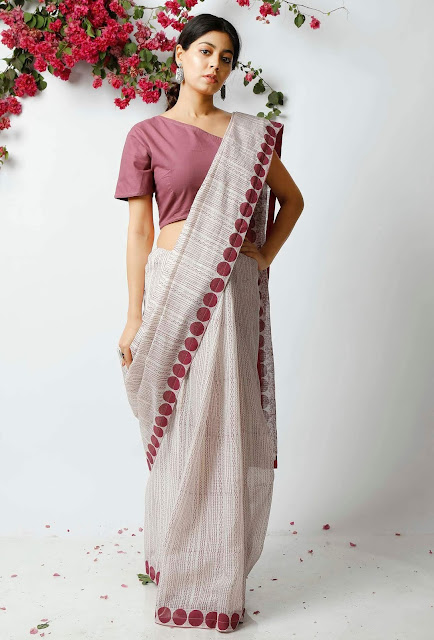Glorious Saree Drapes of North India
Saree is a traditional and elegant form of clothing in India. The most common and popular style of draping a saree is called Nivi draping styles. There are various styles to drape a sari, like Bengali, Maharashtrian, Gujarati, and many more. A sari is divided into three sections, a palla (the end piece), a field (Jamin), and a border (kinara). Palla is the loose end of a saree covering bosoms and shoulder, also it is the majorly decorated part of a saree. A field, depending on the pattern of a sari, is either plain or has fragments of designs. The borders of a sari run along the entire length fabricating it with a final touch.
Banarasi
Sarees
These gleaming drapes from Banaras are one of the most
desired pieces in every woman’s wardrobe. Banarasi sarees are a symbol of high stature and excellent taste, fine silk threads
woven with real gold and silver zari threads result in such magnificent pieces.
Their motifs are mostly inspired by ancient Mughal era designs like paisleys,
florals, and foliate patterns, inter-knitted in the inner or outer edges of the
sari. The border and palla of a Banarasi sari are its main characteristics
depicting the rich aura of Banaras in the intricately woven motifs.
The name is derived from the conjoining of two words; Doria
means thread and Kota is the town where these saris are fabricated. The fact
that the weaving of these saris was originally sparked in Mysore bestows them with
another name, Madurai saris. Mostly favored in summers, these feathery saris
are most sought after for their Khat (checkered) patterns and delicate
transparency.
Lucknowi
Sarees
One fact you may not know about Lucknowi saris is that each
motif of chikan work is crafted with 40 different stitches out of which 6 are
basic stitches and the rest are built on them, also each stitch has a different
name. The art was transported to India by Noor Jehan, wife of the Mughal
emperor Jehangir, and was carried forward by the Nawabs. Chikankari is mostly
done on lightweight fabric like chiffon, mulmul, muslin, etc.
Patola
Sarees
Patola saree is the finest variety of silk sarees with their
exquisite designs and attractive colors. Patola saris are suitable for
weddings, parties, and glamorous events. The main process of making Patola
saree is Tying, untying, and dyeing. Rajkot Patola and Patan Patola are two
different types of Patola sarees. Rajkot patola is made in single ikat and
Patan patola is in Double Ikat. It takes 4 to 6 months to weave a Patola sari.






Comments
Post a Comment